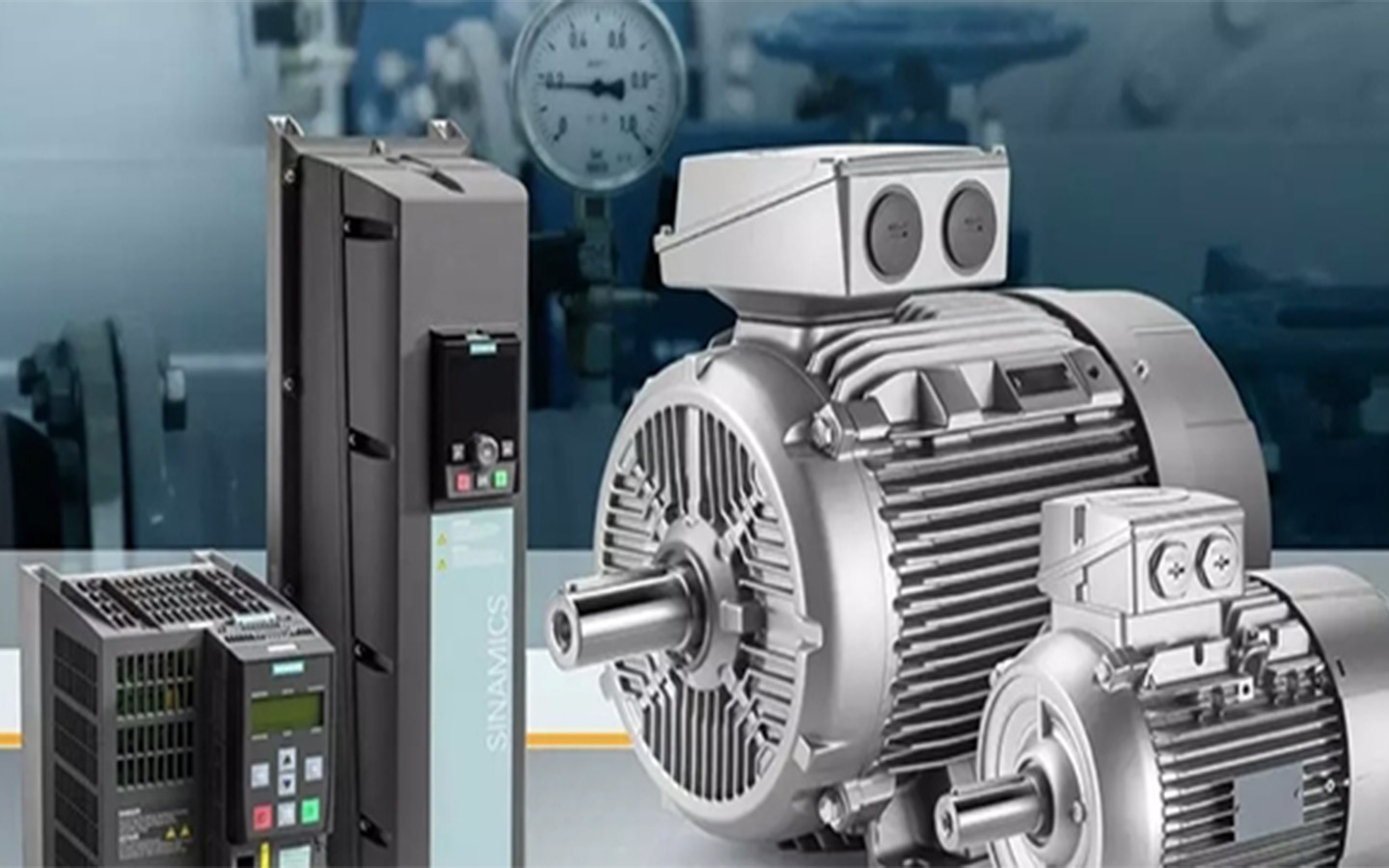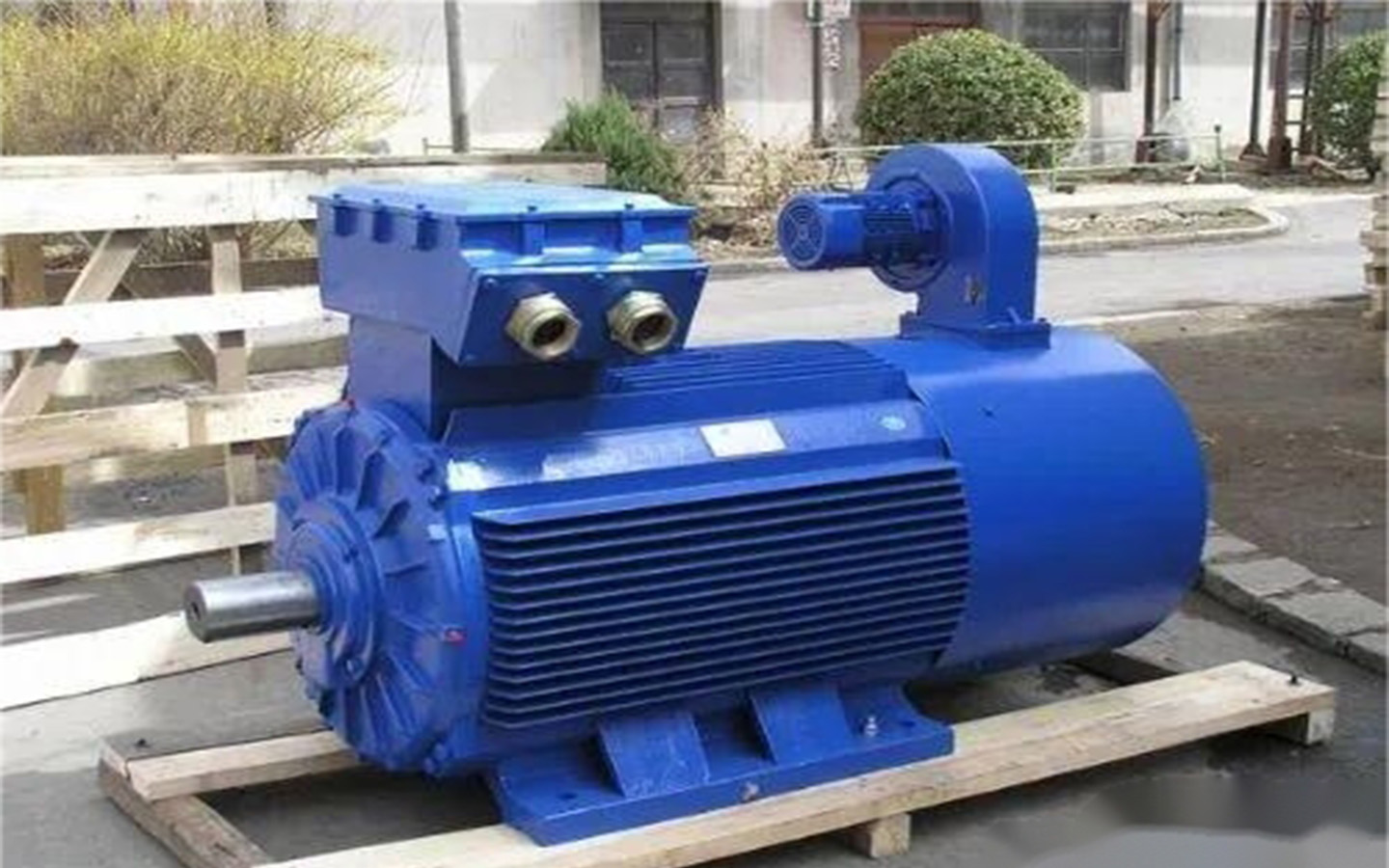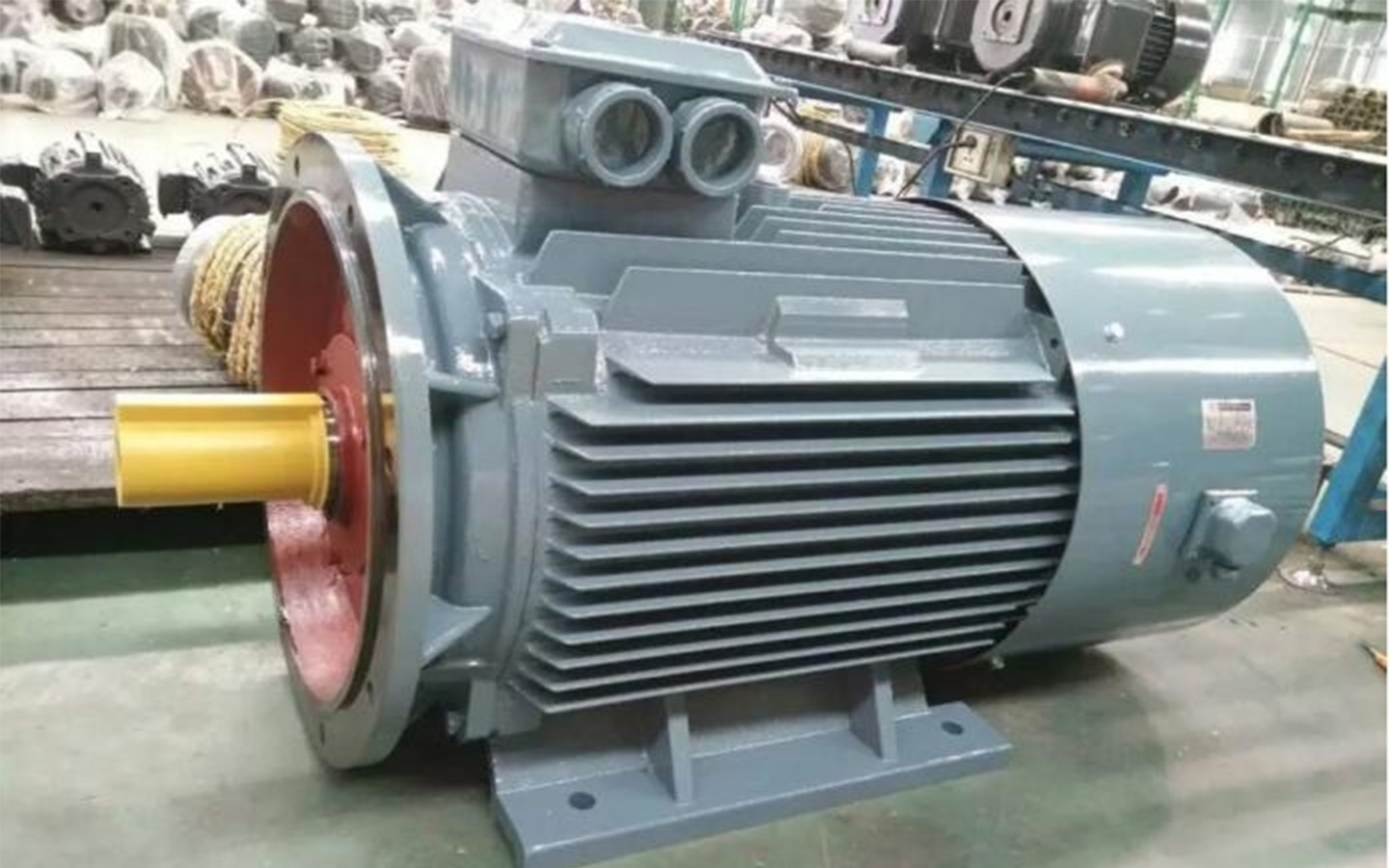
1. Characteristics of Variable Frequency Motors
1.1 Electromagnetic Design
For ordinary asynchronous motors, the performance parameters considered during variable frequency motor design are overload capacity, starting performance, efficiency, and power factor. However, for variable frequency motors, the key issue to be addressed is how to improve the motor’s adaptability to non-sinusoidal power sources because the critical slip ratio is inversely proportional to the power supply frequency, allowing the motor to start directly when the critical slip ratio approaches 1. Therefore, less consideration is given to overload capacity and starting performance. First, minimize the stator and rotor resistance to reduce the fundamental copper loss and compensate for the increase in copper loss caused by higher-order harmonics. Second, to suppress higher-order harmonics in the current, proper increase of motor inductance is necessary. However, the rotor slot leakage reactance is significant, and its skin effect is also significant, causing increased copper loss due to higher-order harmonics. Therefore, the size of the motor’s leakage reactance should balance the impedance matching’s rationality over the entire speed range. Additionally, the main magnetic circuit of variable frequency motors is generally designed to be unsaturated, considering that higher-order harmonics can deepen magnetic circuit saturation. Furthermore, to increase the output torque at low frequencies, the variable frequency converter’s output voltage should be appropriately increased.
1.2 Structural Design
During structural design, the impact of non-sinusoidal power sources on variable frequency motor insulation structure, vibration, noise, and cooling methods is considered. Generally, the insulation level is F class or higher, strengthened to withstand insulation’s impact voltage capability, including ground insulation and winding insulation strength. To address motor vibration and noise issues, the motor component’s rigidity and overall rigidity are fully considered to improve their inherent frequency to avoid resonance with various force waves. Strong forced ventilation cooling is generally adopted, which involves an independent motor drive for the main motor cooling fan. For motors with a capacity of more than 160KW, bearing insulation measures should be adopted since these will easily cause magnetic circuit asymmetry and axle current. When the current generated by other high-frequency components acts together, the axle current will increase significantly, causing bearing damage. Therefore, insulation measures are generally taken. Moreover, for constant power variable frequency motors, special high-temperature grease should be used when the speed exceeds 3000/min to compensate for the temperature rise in the bearing.
2. Common Fault Diagnosis of Variable Frequency Motors
2.1 Turn-to-turn Short Circuit and Partial Discharge
Turn-to-turn short circuit and partial discharge are common types of insulation faults in variable frequency motors. Turn-to-turn short circuit is generally manifested as extensive damage to one of the coils in the motor, while partial discharge is characterized by the appearance of good insulation in the motor coil but with an insulation resistance of zero. The damage to the motor insulation system is not solely caused by a single factor, but by factors such as partial discharge and local dielectric heating.
Partial Discharge: Currently, in the operation of small and medium-capacity variable frequency converters, IGBT power devices are commonly used for pulse width modulation (PWM) technology. The PWM speed control device composed of these devices can provide high spikes with steep leading edges, and its modulation frequency is high, which has a serious impact on the insulation.
Local Dielectric Heating: If the electric field strength E in the motor has significantly exceeded the insulation critical value, the degree of loss of the dielectric will become more and more serious. Especially as the frequency continues to rise, partial discharge will also increase, thus generating heat which will lead to more serious problems such as leakage current.
Cyclic Alternating Stress: When variable frequency motors are put into formal use through PWM power supply, the whole motor bearing damage will become increasingly serious due to the cyclic alternating stress. As there is no comprehensive consideration of electrical and mechanical overall performance in the initial design phase, the aging process of the motor speed will increase.
2.2 Bearing Damage and Excessive Vibration
When analyzing the effect of the PWM variable frequency converter drive system in formal operation, the problem of bearing damage and excessive vibration in the entire variable frequency motor will become increasingly serious, and will often lead to such problems. A 690kW variable frequency motor in a high-speed wire factory, for example, developed severe vibration problems after only 3 months of use. During a fault diagnosis and repair of the problem, the motor was disassembled and its surface spots were discovered due to the influence of shaft current, which caused serious damage to the motor bearings.
2.3 Current Oscillation
At a certain cold rolling mill, a variable frequency motor system with a rating of 250kW/400V/430A has continuously had device failures. During the issue’s troubleshooting process, a control-free load test of the motor’s V/F was performed in advance, and the test results showed that current was abnormal within a range of 7 to 30Hz. Most critically, the amplitudes of the three-phase currents were evidently oscillating, with the maximum oscillating current reaching 700A. An analysis of this issue led to experimentation being conducted on other motors and frequency converters of the same type, which in turn led to the discovery that instability problems existed in both the motors and frequency converters in the same frequency range. When the motor was near the power frequency, its running state was relatively stable, but if it was in the frequency range of 20-30Hz, and especially at 40Hz, the motor’s current would oscillate with a period of 10-20Hz. When the peak value was too high, the entire operation state of the motor would be seriously affected. For an asynchronous motor, if it is in a state of zero slip rate, the transient torque fluctuation will be unstable. Moreover, the torque ripple and transient changes in V/F under inverter drive can cause obvious torque fluctuations that may turn into vibrations and even continue to vibrate. This type of torque fluctuation is somewhat correlated with harmonic currents. Therefore, when a variable frequency motor is in an unstable running state, it is not appropriate to simply assume that either the motor or frequency converter has a fault. Instead, a comprehensive analysis of the parameters of the motor and frequency converter is necessary to make a proper judgment on the fault.

3. Troubleshooting Measures for Variable Frequency Motors
The application of variable frequency motors is becoming more and more widespread. For the maintenance of variable frequency motors, effective measures must be taken based on their characteristics to ensure their normal operation.
3.1 Maintenance requirements for variable frequency control motors
Variable frequency control motors generally use 4-pole motors, with the design base frequency set at 50Hz. The frequency range is 0-50Hz (0-1480r/min) for constant torque operation and 50-100Hz (1480-2800r/min) for constant power operation. The entire speed range is from 0-2800r/min, which meets the requirements of most drive devices. The motor’s performance is similar to that of a DC variable speed motor and its speed can change smoothly and stably. If a higher output torque is required within the constant torque speed range, a 6-pole or 8-pole motor can also be selected, but the motor’s size will be relatively larger. The electromagnetic design of variable frequency control motors uses flexible CAD design software, and the base frequency design point of the motor can be adjusted at any time. The performance of the motor at each base frequency point can be simulated accurately on a computer, which expands the constant torque speed range of the motor. Based on the actual operating conditions of the motor, we can increase the motor’s power within the same frame size or increase the motor’s output torque on the basis of using the same frequency converter to manufacture the motor in the best state under various working conditions.
Variable frequency control motors can also be equipped with additional speed encoders to achieve high-precision speed, position control, and fast dynamic response advantages. They can also be equipped with motor-specific DC (or AC) brakes to achieve fast, effective, safe, and reliable braking performance. Due to the adjustable base frequency design of variable frequency control motors, various high-speed motors can be manufactured to maintain constant torque characteristics during high-speed operation. This to a certain extent replaces the original intermediate frequency motor and at a lower price. Variable frequency control motors are three-phase AC synchronous or asynchronous motors. According to the output power of the frequency converter, the motor power supply can be three-phase 380V or three-phase 220V. For a frequency converter with a power below 4KW, it usually has a three-phase 220V power supply. Since the variable frequency motor is divided into different constant power and constant torque speed control zones based on the motor’s base frequency point (or turning point), the setting of the frequency converter’s base frequency point and the motor’s base frequency point are both very important.
3.2 Improving Insulation Performance
Reasonable utilization of corona-resistant wire coatings can aid in increasing the number of shield coating layers on screens. Quantum chemical technology can be used to directly involve chemical materials utilized for shielding in the polymerization reaction of the coating-based polymer, serving as the main material for the coating film, ensuring timely dispersion and resolution of high-frequency overvoltage and improving the overall corona resistance of the coating film. Slot insulation materials currently selected include NHN and F-grade DMD made from a combination of several different blends, which have strong organic characteristics and do not possess corona resistance. Therefore, new slot insulators that contain mica should be utilized, as mica inclusion aids in improving corona resistance. For interphase insulation, products with polyester flannel surfaces should be selected. This type of product has significant advantages over other materials in absorbing resin, aiding in the formation of effective bonding with wires.
The impregnation process has always been an important procedure for frequency conversion motors during maintenance, and the most important thing to keep in mind is to avoid resin flow. VPI is typically utilized, or impregnation processes can be added after VPI treatment, effectively eliminating bubbles, continuously filling gas gaps in the winding, and also increasing electrical and mechanical strength of the winding, thereby strengthening its resistance to heat and pollution. If conditions permit, UV and current heating drying can be used for treatment, which can produce excellent results.
In addition, it is important to avoid causing short circuits and ensure that the assembly of motor bearings and other components meets basic precision requirements, while also avoiding serious local heating problems caused by eddy current losses. Failure to do so will ultimately affect the insulation performance of the motor.
3.3 Eliminating the Influence of Shaft Current
In order to ensure that the shaft current can be reduced to a harmless level, the shaft current should be controlled below 0.4A/mm2 or 0.35mV. Based on the specific environment and characteristics of the motor, targeted measures should be taken to eliminate the adverse effects of the shaft current.
Suppress power supply harmonics: To eliminate the effects of shaft currents, filters can be added directly into the inverter power supply speed control system, or matching frequency conversion speed control devices can be used, which can reduce harmonics, and thereby reduce the adverse effects of shaft currents and vibrations.
Bearing insulation measures: Bearing-specific insulation measures can be taken to directly eliminate the adverse effects of shaft currents. The current methods generally include insulation of the load-side bearing of the motor, insulation of non-load side bearings, using insulated bearings as the main bearing form in rolling bearing structures, or uniformly spraying an insulating layer of 50-100mm on the inner and outer surfaces of the bearing using ionic spraying. In addition, measures such as adding insulation sleeves to the bearing chamber of the end cover, increasing insulation layers between the sleeve and end cover, and tightening the inner and outer cover bearings should be taken. For sliding bearing structures, suitable epoxy glass cloth boards can be added at fixed bearing positions or insulation pipe joints can be added at inlet and outlet oil pipeline positions. All these methods can effectively eliminate the adverse effects of shaft current.
To eliminate the effects of the shaft current, monitoring lines can also be used to strengthen insulation, improve the motor operating environment, and other strategies. In summary, effective measures should be taken based on the specific characteristics and requirements of the motor, and various perspectives should be taken into account to achieve good results.
3.4 Improving Current Oscillation Problems
After long-term testing, summarization, and analysis, increasing the rotational inertia of the motor or loading it in an appropriate manner can be used to ensure effective management of current oscillation issues and improve the instability of the motor current. In addition, an appropriate increase in DC-side capacitance of voltage-type inverters can reduce voltage fluctuations. Combined with PWM-controlled inverter operation status, using rapid switch elements, or directly decreasing the modulation frequency of PWM can help avoid dead zone influence on output voltage and eliminate oscillation. To eliminate current oscillation issues, motors with high slip rates, current feedback, and other methods can be used to ensure timely feedback of the circuit vector control situation, thus improving the stability of the frequency conversion motor.


 Español
Español Русский
Русский Tiếng Việt
Tiếng Việt 中文
中文 suomi
suomi Français
Français Português
Português English
English Deutsch
Deutsch Français
Français Español
Español Italiano
Italiano Português
Português Pусский
Pусский


